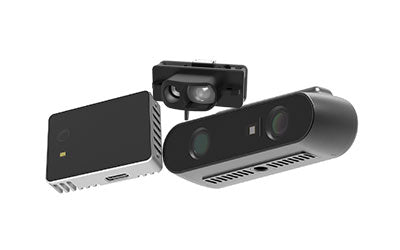TOF Sensors in Autonomous Aircraft Development

Autonomous aircraft have the potential to revolutionize the way we travel and transport goods, making transportation faster, safer, and more efficient. To achieve this, autonomous aircraft rely on various sensors to collect data and make informed decisions about flight path and operations. One type of sensor that is increasingly being used in autonomous aircraft is Time-of-Flight (TOF) sensors. In this article, we will explore the use of TOF sensors in the development of autonomous aircraft.
What are TOF sensors?
TOF sensors are a type of 3D imaging technology that measures the distance between objects by measuring the time it takes for light to bounce back from them. TOF sensors emit short bursts of light, and then measure the time it takes for the light to return to the sensor. This data is then used to create a 3D image of the surrounding environment.
TOF sensors in autonomous aircraft
One of the main challenges faced by autonomous aircraft is the need to navigate through complex and constantly changing environments. TOF sensors can help address this challenge by providing real-time data on the aircraft's surroundings, including obstacles and terrain. This data can be used to adjust the aircraft's flight path in real-time, helping to avoid collisions and maintain a safe and efficient flight.
Another use of TOF sensors in autonomous aircraft is for object detection and avoidance. TOF sensors can detect objects in the aircraft's path, allowing the aircraft to adjust its flight path and avoid collisions. This is particularly important in situations where the aircraft is flying at high speeds or in areas with low visibility.
TOF sensors can also be used to improve the accuracy of landing and takeoff in autonomous aircraft. By providing real-time data on the aircraft's height above the ground, TOF sensors can help ensure a smooth and safe landing or takeoff.
Finally, TOF sensors can be used for mapping and surveying in autonomous aircraft. By providing accurate 3D images of the surrounding environment, TOF sensors can help create detailed maps and models of the terrain, which can be used for a range of applications, including disaster response and urban planning.
Conclusion
The use of TOF sensors in the development of autonomous aircraft is still relatively new, but the potential benefits are significant. TOF sensors can help address some of the main challenges faced by autonomous aircraft, including navigation, object detection and avoidance, and landing and takeoff. As the technology continues to evolve, we can expect to see even more advanced applications of TOF sensors in autonomous aircraft, paving the way for a safer, more efficient, and more sustainable future of air transportation.
Synexens 3D Of RGBD ToF Depth Sensor_CS30

Our professional technical team specializing in 3D camera ranging is ready to assist you at any time. Whether you encounter any issues with your TOF camera after purchase or need clarification on TOF technology, feel free to contact us anytime. We are committed to providing high-quality technical after-sales service and user experience, ensuring your peace of mind in both shopping and using our products.
-
Posted in
CS30


